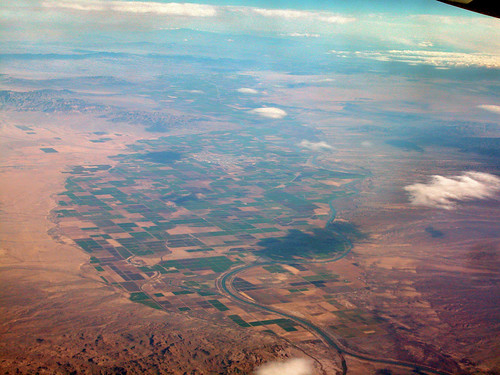I’m pretty sure Michael Tobis and I share important goals and values. We both, I think, believe that political and public policy processes have the best outcomes when science is well understood and used by the participants. We both, I think, believe that journalism can and should play some sort of role in helping toward that end.
But in a discussion today in the comments on his blog, Michael and I show a very different understanding of how journalism is executing that role.
Michael is of the view that mainstream journalism, as evidenced in his chosen example by the New York Times, is failing. How? By sharing with readers the “bafflegab” of columnist John Tierney without any contradicting views: “Tierney on the one side and nobody at all on the other, in the most influential liberal newspaper.”
This is false.
Since the first of June, the Times opinionsphere, the part of its journalism that Tierney occupies, has published three op-eds on climate change by Thomas Friedman, two each by Paul Krugman and Ban Ki-Moon, plus one each by Greg Mankiw and Paul Hohnen and Jeremy Leggett, all expressing views consistent with the scientific consensus and in support of action in response.
These are not “nobodies”.
And what of the news pages? I went back through the last 100 hits on the Times’ search engine before I got bored. I found lots of good informative coverage of the international politics leading up to Copenhagen, John Broder’s piece on the national security implications of climate change, Cornelia Dean on the implications of three foot sea level rise, a terrific piece on the drying of the Amazon, coverage of the fake letters from Bonner and Associates to members of Congress, a look at the oil industry funding behind the astroturf citizen rallies. I found zero people quoted arguing that it was really the sun that was responsible, or that it hadn’t warmed since 1998 (update: See correction below), or that it was really El Nino, or that the scientific consensus was collapsing. There was no bafflegab that I could find in the news coverage at all.
Michael also made a more nuanced argument, by way of a question to Keith Kloor and myself:
Are you guys saying that the information presented to decision makers about climate has approximately the same balance as the information generated by the relevant sciences?
I would have to say that, after having taken a quick pass through the last 100 or so things published on climate change in the New York Times and only having found one or possibly two bits of bafflegab (both in the opionsphere), that the answer is, “Well, on balance, if decision-makers on climate change are getting all of their information from the New York Times, then yes.”
Last month, Michael took a perfectly legitimate shot at Marc Morano for gleefully noting every little cold spell without also acknowledging Austin’s record heat this summer. But that is what we do, right? Notice the anecdotes that support our notions of the thing and fail to notice the ones that don’t?
My intent here was not to single out the New York Times for scrutiny. It just happened to be the example Michael cited, and he made a testable claim. This is not merely a “someone is wrong on the Internet” problem, because it goes to the heart of Michael’s efforts to help improve the use of science in politics and policymaking – efforts that I support and agree with. If Michael’s misdiagnosing the problem, then his suggested treatments will be of little use.
update: I note that in my review I inexplicably missed Andy Revkin’s story from this week on the political implications of the “pause” in warming. I don’t think it counts as bafflegab. It unambiguously argues thus: “Scientists say the last decade of climate stability — which follows a precipitous rise in average global temperatures in the 1990s — is a result of cyclical variations in ocean conditions and has no bearing on the long-term warming effects of greenhouse gases building up in the atmosphere.” (emphasis added) But there is, in fact, one story in the hundred that does discuss the alleged lack of warming since the late 1990s.


